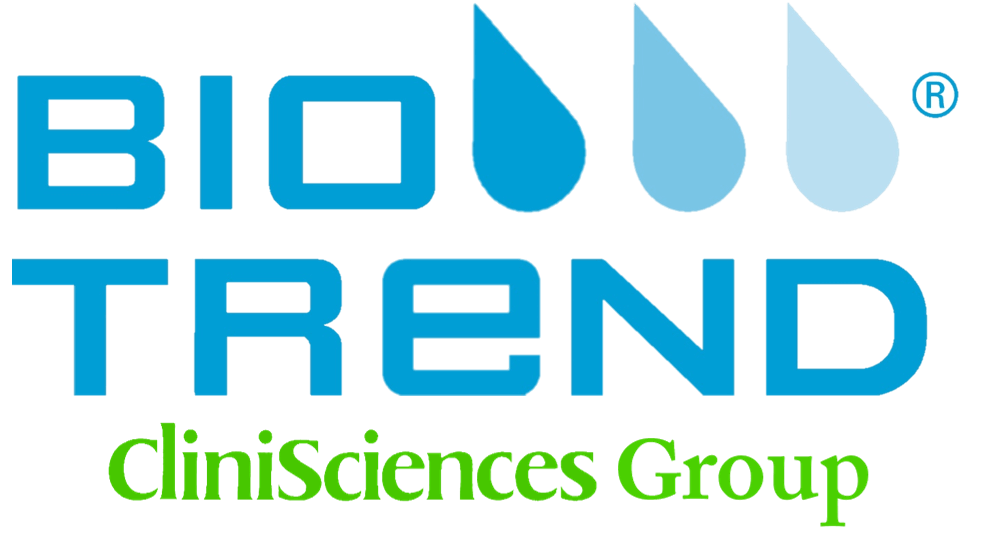- Specifications
Product Description
Mouse monoclonal antibody raised against HLA-G.
Immunogen
HLA-B27 transgenic mice were imunized with H-2 identical murine cells transfected with and expressing genes encoding HLA-G and human beta2-microglobulin.
Host
Mouse
Reactivity
Human
Specificity
This antibody recognizes both membrane-bound and soluble forms of HLA-G (HLA-G1 and HLA-G5). This antibody blocks interaction of HLA-G with inhibitory receptors.
Form
Liquid
Conjugation
PE
Concentration
0.1 mg/mL
Isotype
IgG2a
Recommend Usage
Flow Cytometry (1:10)
The optimal working dilution should be determined by the end user.Storage Buffer
In PBS (0.2% BSA, 0.09% sodium azide)
Storage Instruction
Store in the dark at 4°C. Do not freeze.
Avoid prolonged exposure to light.
Aliquot to avoid repeated freezing and thawing.Note
This product contains sodium azide: a POISONOUS AND HAZARDOUS SUBSTANCE which should be handled by trained staff only.
- Applications
Flow Cytometry
- Gene Info — HLA-G
Entrez GeneID
3135Gene Name
HLA-G
Gene Alias
MHC-G
Gene Description
major histocompatibility complex, class I, G
Gene Ontology
HyperlinkGene Summary
HLA-G belongs to the HLA class I heavy chain paralogues. This class I molecule is a heterodimer consisting of a heavy chain and a light chain (beta-2 microglobulin). The heavy chain is anchored in the membrane. HLA-G is expressed on fetal derived placental cells. The heavy chain is approximately 45 kDa and its gene contains 8 exons. Exon one encodes the leader peptide, exons 2 and 3 encode the alpha1 and alpha2 domain, which both bind the peptide, exon 4 encodes the alpha3 domain, exon 5 encodes the transmembrane region, and exon 6 encodes the cytoplasmic tail. [provided by RefSeq
Other Designations
HLA class I molecule|HLA-G histocompatibility antigen, class I, G|MHC class I antigen|OTTHUMP00000039485|b2 microglobulin
- Interactomes
- Pathways
- Diseases
- Abortion
- Anemia
- Arthritis
- Asthma
- Autoimmune Diseases
- Behcet Syndrome
- Birth Weight
- Bronchial Hyperreactivity
- Carcinoma
+ View More Disease
- Publication Reference
- Immune regulation by pretenders: cell-to-cell transfers of HLA-G make effector T cells act as regulatory cells.
LeMaoult J, Caumartin J, Daouya M, Favier B, Le Rond S, Gonzalez A, Carosella ED.
Blood 2006 Oct; 109(5):2040.
- The surface expression of HLA-F on decidual trophoblasts increases from mid to term gestation.
Shobu T, Sageshima N, Tokui H, Omura M, Saito K, Nagatsuka Y, Nakanishi M, Hayashi Y, Hatake K, Ishitani A.
Journal of Reproductive Immunology 2006 Jun; 72(1-2):18.
- HLA-G proteins in cancer: do they provide tumor cells with an escape mechanism?
Rouas-Freiss N, Moreau P, Ferrone S, Carosella ED.
Cancer Research 2005 Nov; 65(22):10139.
- Immune regulation by pretenders: cell-to-cell transfers of HLA-G make effector T cells act as regulatory cells.
HLA-G monoclonal antibody, clone 87G (PE)
Cat# MAB5094
Size : 100ug


